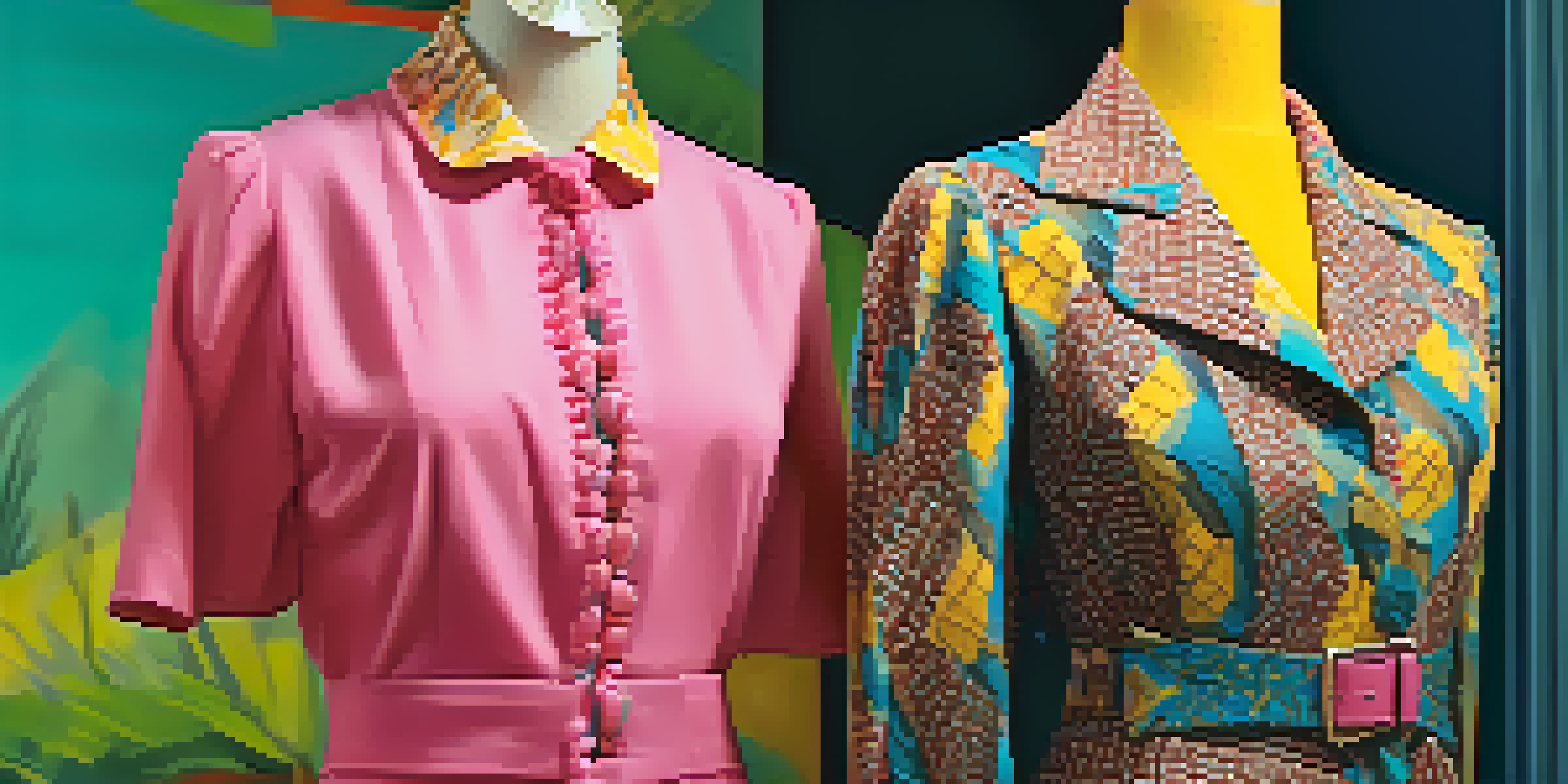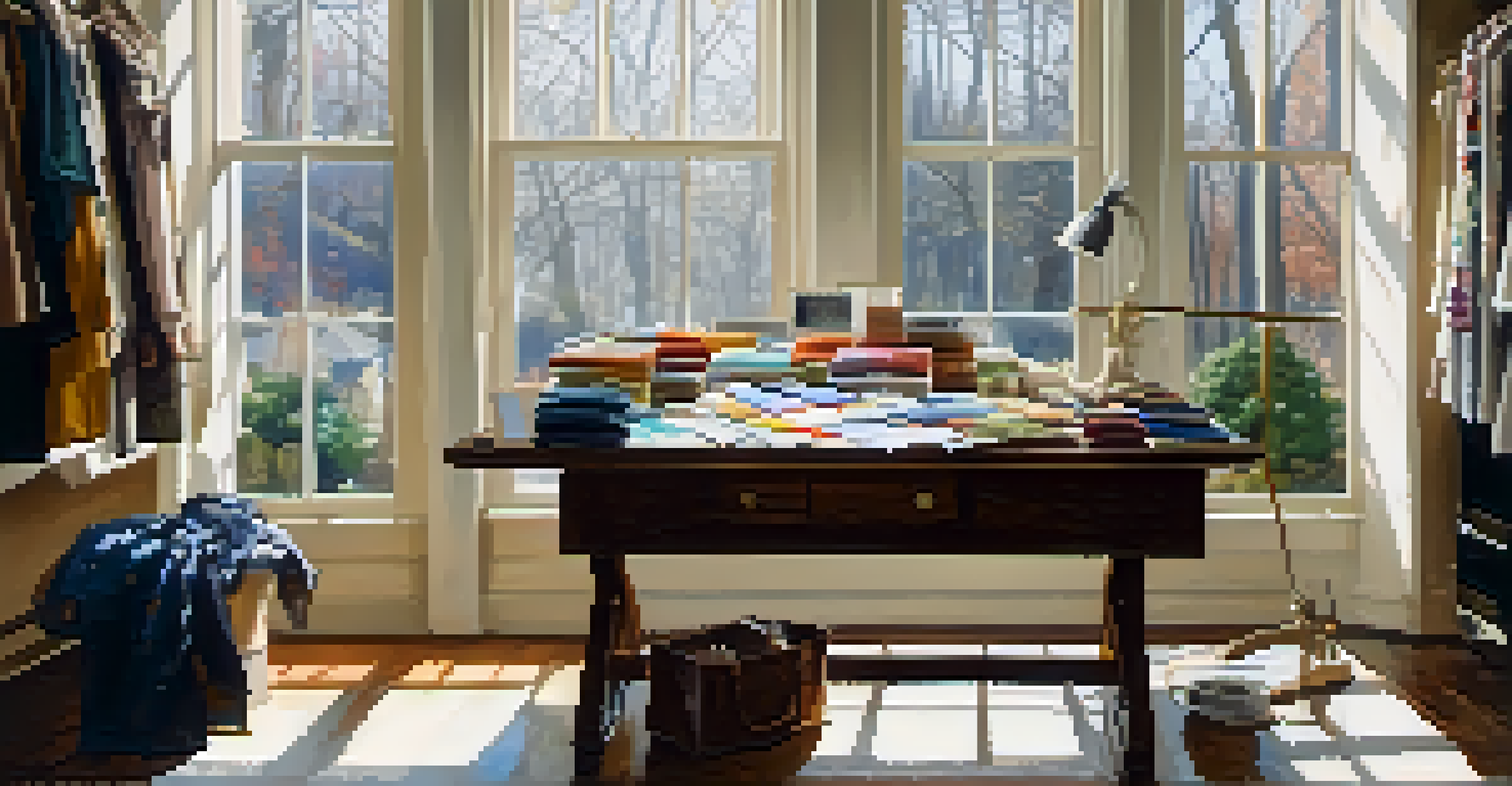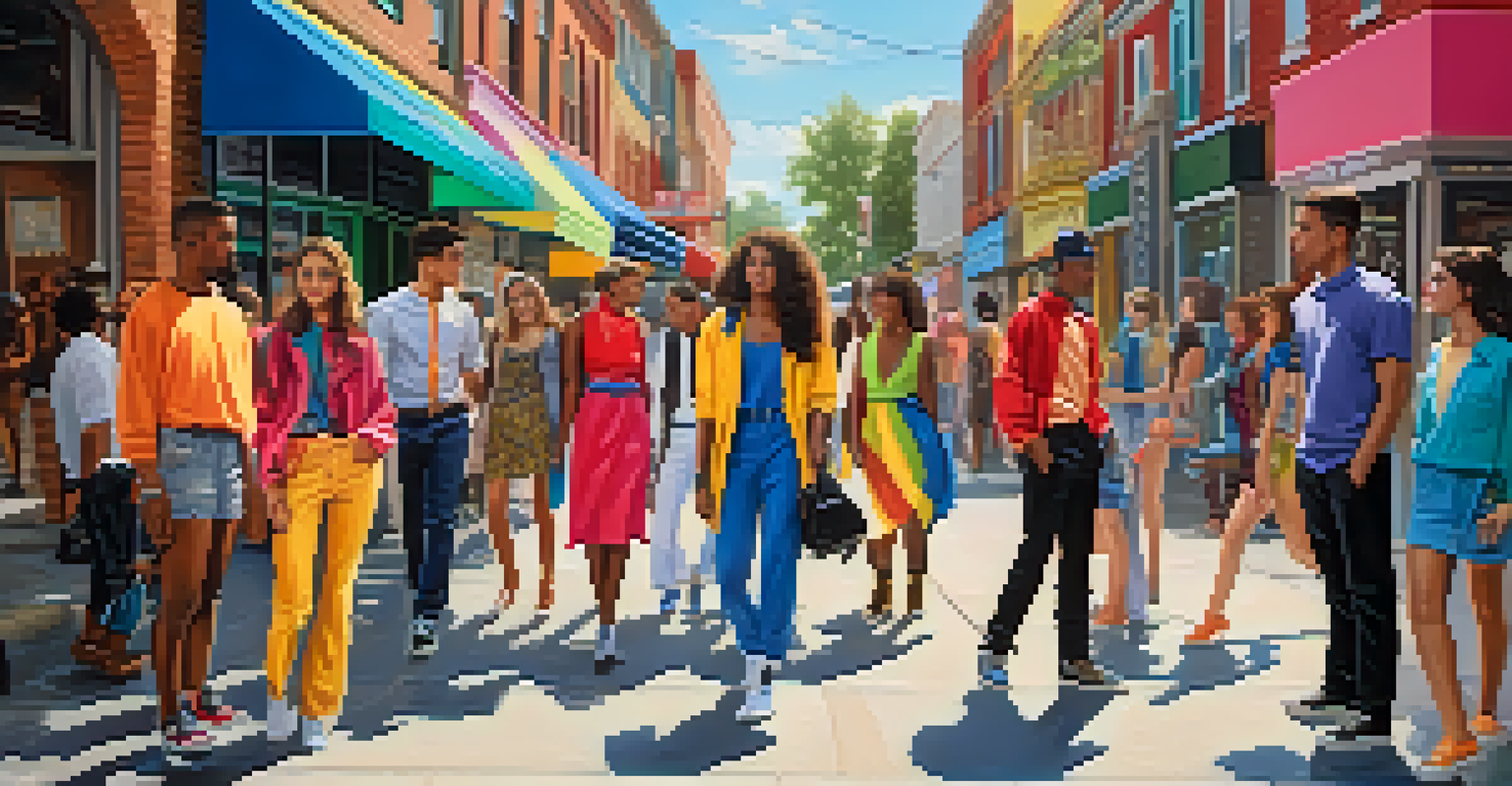Television's Best Dressed: How Shows Influence Everyday Style

The Impact of Iconic Characters on Fashion Trends
Television has a unique ability to introduce characters that become style icons. Think of characters like Carrie Bradshaw from 'Sex and the City' or Rachel Green from 'Friends'; their outfits often defined the trends of their respective eras. Viewers are captivated not just by the stories, but by the clothing that reflects the characters' personalities and lifestyles.
Fashion is the armor to survive the reality of everyday life.
When these characters don stylish outfits, it creates a desire among viewers to emulate their looks. Fashion designers and brands often take cues from these shows, launching collections that mirror the aesthetics seen on screen. This phenomenon underscores how powerful visual media can be in shaping public perception of fashion.
As a result, fans find themselves shopping for similar pieces to recreate their favorite looks. This interplay between television and fashion illustrates a symbiotic relationship: shows drive trends, and trends keep viewers engaged.
How Costume Designers Set the Stage for Style
Costume designers play a crucial role in shaping the fashion narrative of a show. Their expertise allows them to create wardrobes that not only fit the character but also resonate with viewers. A well-designed costume can tell a story, revealing insights about the character's background and evolution throughout the series.

For instance, take 'The Crown'—the meticulous attention to historical detail in the wardrobe choices adds layers to the storytelling. Viewers are not just watching a drama; they’re also getting a masterclass in style that is often rooted in real history. This attention to detail encourages viewers to appreciate the artistry behind fashion.
Iconic Characters Drive Fashion Trends
Television characters like Carrie Bradshaw and Rachel Green not only captivate audiences with their stories but also set significant fashion trends that viewers eagerly emulate.
These costume choices often lead to increased interest in similar styles, prompting fans to seek out garments that reflect the show's aesthetic. As a result, costume designers become unexpected trendsetters, influencing the fashion landscape well beyond the small screen.
Social Media: The New Runway for TV Fashion
Social media has transformed how fashion trends are communicated, particularly those inspired by television. Platforms like Instagram and TikTok allow fans to share their interpretations of outfits seen on their favorite shows, effectively turning everyday people into fashion influencers. This democratization of style means that anyone can showcase how a character's outfit inspired their own look.
The way you dress is an expression of your personality.
For example, a popular hashtag may spring up after a character wears a standout outfit, leading to a flurry of posts where users recreate the look. This creates a community of fans who bond over shared style inspirations, making fashion more relatable and accessible. The immediacy of social media amplifies the impact of television fashion in real time.
Consequently, shows can achieve a viral effect, with specific outfits leading to spikes in sales for certain brands or styles. This dynamic connection between television and social media ensures that fashion trends evolve rapidly, keeping viewers engaged and excited.
From Screen to Closet: The Rise of Merchandise
As television shows gain popularity, they often expand their reach through merchandise, including clothing lines inspired by the characters. This allows fans to wear their favorite shows on their sleeves—literally. Brands collaborate with shows to create collections that capture the essence of beloved characters and their iconic styles.
Take 'Stranger Things' as a prime example; the show's 1980s aesthetic has led to a resurgence of vintage-inspired clothing and accessories. Fans can now purchase items that mimic the style of characters like Eleven or Mike, making it easy to incorporate their favorite show into their everyday wardrobes. This trend blurs the lines between fandom and fashion.
Costume Designers as Trendsetters
Costume designers craft wardrobes that reveal character depth and influence viewers’ fashion choices, making them unexpected leaders in the fashion landscape.
By offering merchandise, shows tap into the emotional connection fans have with their characters. It’s not just about clothing; it’s about a lifestyle that viewers want to embody, allowing them to feel closer to the narratives they love.
The Role of Celebrity Influence in TV Fashion
Celebrities often appear on television shows, creating a dual influence on fashion trends. When a beloved star showcases a specific style, it can lead to a fashion phenomenon. Their on-screen personas and off-screen lives can inspire fans to adopt similar looks, blending the lines of reality and fiction.
Consider the case of Zendaya in 'Euphoria'; her character's bold and eclectic style has sparked countless fashion trends. Fans are not only inspired by the character but also by Zendaya's real-life fashion choices, which often reflect a similar aesthetic. This crossover effect magnifies the impact of what viewers see on screen.
In many ways, celebrities serve as a bridge between the audience and the world of high fashion. Their ability to translate runway looks into relatable outfits encourages fans to experiment with their own styles, reinforcing the idea that fashion is not just for the elite but for everyone.
Fashion Statements Shaping Cultural Conversations
Television fashion often transcends aesthetics, becoming a vehicle for cultural conversations. Outfits can symbolize movements, challenges, and societal changes, making them powerful tools for commentary. When characters wear specific styles, it can resonate with broader social issues, prompting viewers to reflect on their own lives.
For example, in shows like 'The Handmaid's Tale,' the stark and oppressive fashion serves as a critique of societal norms. Such choices can spark important discussions about identity, freedom, and resistance. This shows how fashion can be more than just clothing—it can be a statement.
Sustainable Fashion in TV's Future
As awareness of environmental issues grows, television fashion is increasingly embracing sustainability and innovation, promoting eco-friendly practices in costume design.
As viewers engage with these themes, they often seek to incorporate similar elements into their own wardrobes, using fashion as a means of expression. This highlights how television can inspire not just style but also meaningful dialogue about the world we live in.
The Future of TV Fashion: Sustainability and Innovation
As we look to the future, television fashion is increasingly focused on sustainability and innovation. With growing awareness of environmental issues, many productions are prioritizing eco-friendly materials and practices in their costume design. This shift not only sets an example for viewers but also aligns with the values of a socially conscious audience.
Shows are now exploring ways to integrate sustainable fashion into their narratives. For instance, characters may be seen wearing thrifted or upcycled clothing, encouraging viewers to rethink their consumption habits. This evolving approach highlights not just style but also responsibility.

Moreover, as technology advances, the way fashion is showcased on television is changing. Virtual fittings and digital fashion are becoming commonplace, allowing for creativity without the environmental impact of traditional production methods. This innovative spirit suggests a future where fashion remains influential while also being mindful of its global footprint.